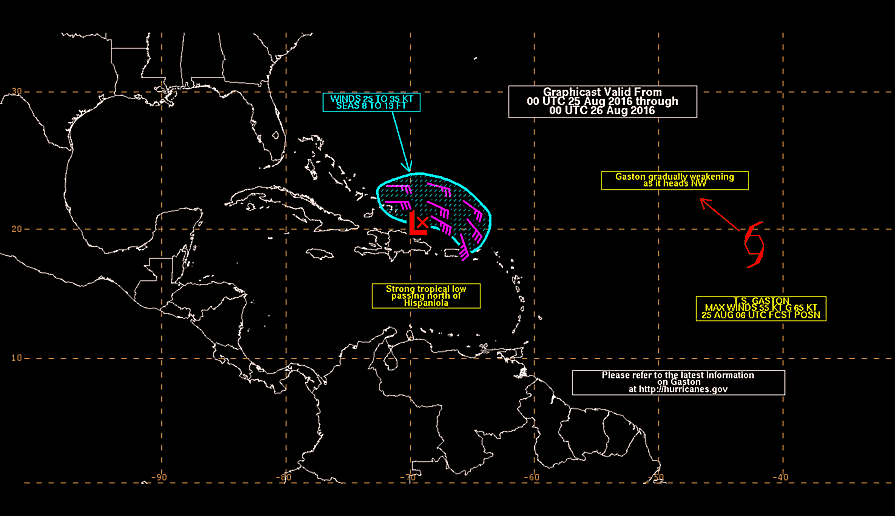 |
| Satellite View: GOES-East - IR Rainbow (30 minute updates) |
"We advise citizens and boaters to make preparations and monitor official weather updates as this tropical wave moves through the area," said Capt. Robert Warren, Sector San Juan commander and Captain of the Port San Juan. "Swimmers, recreational boaters and the general public should exercise caution and stay away from shoreline rocks until weather and surf conditions normalize. We will continue to monitor the winds and sea conditions in our area of responsibility."
The Coast Guard requests that the public not call Coast Guard facilities for weather information, but that they listen to weather broadcasts and track internet updates through:
"Mariners should avoid unnecessary risk and use extreme caution if heading out on the water," said Capt. Megan Dean, Sector Miami Commander. "Remember to remove your EPIRB from your vessel if the vessel will not be in use. EPRIBs left aboard vessels, with no one aboard, often get activated and result in a false alert. False alerts can cause a delay in Coast Guard search and rescue operations."
Here are a few tips to help mariners protect themselves, their families and their vessels:
- Do not go out to sea in a recreational boat if you know a storm is approaching.
- Contact local marinas to ask for advice about securing your vessel.
- Marina operators are knowledgeable and can advise you on the best methods for securing your boat.
- Take action now. The effects of a storm can be felt well in advance, and bridge schedules can and often shift from their normal operating schedule. Check with local authorities before entering any storm-damaged area.
- When removing your EPIRB from your vessel, ensure it does not inadvertently activate which could signal a false alert. Furthermore, once the severe weather has passed, mariners are reminded to ensure the EPIRB devices are placed back on their vessels prior to the vessel's next use.
- Do not rush to your boat. Boaters should not place themselves in danger to get to a boat.
- Do not try to board a partially sunken boat. Seek salvage assistance from a professional. Storms move quickly and are unpredictable.
- The peak of the hurricane season – why now? | National Oceanic and Atmospheric Administration: From mid-August through mid-October, the activity spikes, accounting for 78 percent of the tropical storm days, 87 percent of the category 1 and 2 hurricane days (Saffir-Simpson Hurricane Wind Scale), and a whopping 96 percent of the major (category 3, 4 and 5) hurricane days.
- JohnTheCrowd | Sailing News: NOAA's Revised Atlantic Hurricane Forecast, Are You Prepared? (video)
- JohnTheCrowd | Sailing News: 2016 Atlantic Hurricane Season, NOAA Outlook, Preparedness (videos)

